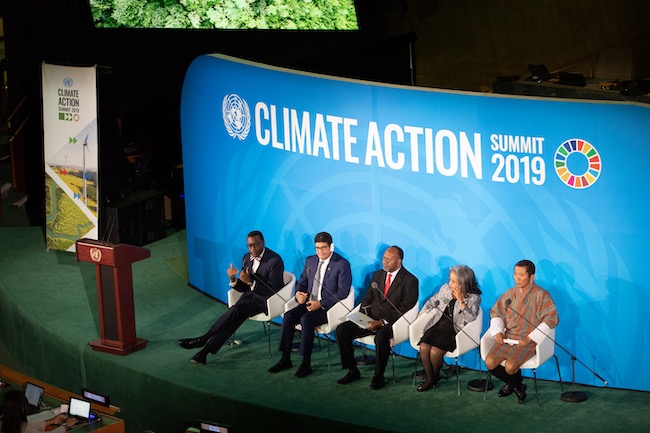The world is at war with an invisible and deadly enemy: COVID-19. As the virus ravages across the globe, it causes serious illness, death and it disrupts life as we know it. “The virus does not care about ethnicity or nationality, faction or faith. It attacks all, relentlessly. The most vulnerable – women and children, people with disabilities, the marginalized and the displaced – pay the highest price,” UN Secretary-General António Guterres said in a recent video briefing on the global pandemic.
The COVID-19 outbreak affects all segments of the population and is particularly detrimental to members of those social groups in the most vulnerable situations, including older persons, persons with disabilities, youth and indigenous peoples. The social crisis caused by the COVID-19 pandemic, could further spur inequality, discrimination and unemployment around the globe.
How can we prevent this from happening? How can we protect vulnerable groups during this global pandemic? Here, our team in UN DESA’s Division for Inclusive Social Development gives updates and share actions to protect vulnerable people.
Older persons and COVID-19
Although social distancing is necessary to reduce the spread of the disease, if not implemented correctly, such measures can also lead to increased social isolation of older persons at a time when they may be at most need of support.
The discourse around COVID-19, perceived as a disease of older people, aggravates negative stereotypes about older persons. Such age-based discrimination may manifest itself in the provision of services, particularly where doctors and nurses must make difficult decisions regarding how to allocate too scarce resources, such as respirators. In such instances the treatment of older persons may be perceived to have less value than the treatment of younger generations.
Persons with disabilities and COVID-19
In countries around the world, persons with disabilities are disproportionately likely to experience poverty and to face challenges in accessing health-care services, education, employment, and other essential services, due to lack of availability, accessibility, affordability, as well as stigma and discrimination.
To ensure that persons with disabilities are able to access to information on COVID-19, it must be made available in accessible formats, including Braille, large print, and text captioning of videos for the hearing impaired.
Healthcare buildings must also be physically accessible to persons with mobility, sensory and cognitive impairments. Moreover, persons with disabilities must not be prevented from accessing the health services they need in times of emergency due to any financial barriers.
Youth and COVID-19
In terms of employment, youth are normally disproportionately unemployed, and those who are employed often work in the informal economy or gig economy, on precarious contracts or in service sectors that are likely to be severely affected by COVID-19.
Currently, more than one billion youth are no longer physically in school after the closure of schools and universities across many countries. The disruption in education and learning could have medium and long-term consequences on the quality of education. At the same time, efforts by teachers, school administrations, local and national governments to cope with these unprecedented circumstances should be recognized.
Many vulnerable young persons, such as migrants or homeless youth are in precarious situations. They are the ones who can easily be overlooked if governments do not pay specific attention, as they tend to be already in a situation without even their minimum requirement for support being met on health, education, employment and well-being.
Indigenous peoples and COVID-19
Indigenous peoples are particularly vulnerable due to their almost universally lower life expectancy and health status compared to that of the general population and owing to the lack of access to healthcare. In some parts of the world, indigenous peoples are not registered at birth, and therefore do not have legal access to free healthcare.
The first point of prevention is dissemination of information in indigenous languages that will ensure that all people are reached and informed of the current situation and how to stay protected.
Five key actions to protect vulnerable people against COVID-19
Provide social protection and economic relief to people who are severely affected by COVID-19;
Make public health communication, particularly information on COVID-19 accessible to all;
Ensure that public health communication messages are respectful and non-discriminatory;
Promote new technologies and digital tools to support people in isolation;
Ensure that COVID-19 emergency and mitigation measures are inclusive.
“A society’s overall health depends on the health of its poorest people,” stressed UN DESA Head, Liu Zhenmin, in a message on the COVID-19 pandemic.
We need solidarity, political will and innovative policy action to protect vulnerable people and their well-being, and uphold the right to health, including access to information, care and medical services.
When everyone is included, everyone benefits.
For more information:
UN DESA’s Division for Inclusive Social Development
New UN DESA web portal on COVID-19











